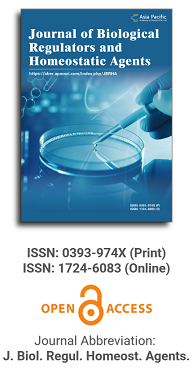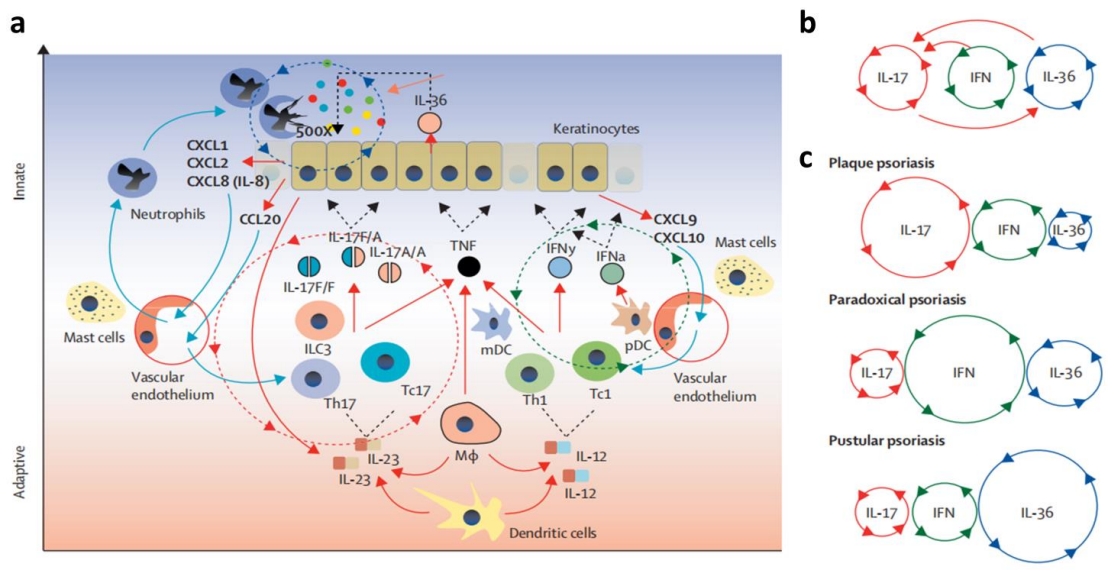
Asia Pacific Academy of Science Pte. Ltd. (APACSCI) specializes in international journal publishing. APACSCI adopts the open access publishing model and provides an important communication bridge for academic groups whose interest fields include engineering, technology, medicine, computer, mathematics, agriculture and forestry, and environment.

Pedobarography and foot homeostasis in the pediatric population: A narrative review
Vol 39, Issue 3, 2025
Download PDF Download PDF
Abstract
Foot homeostasis refers to a delicate and intertwined equilibrium of various body structures, including the neural and musculoskeletal elements. It reflects the ability to coordinate body movements, balance, and gait, using the functional feedback-operative foot-brain axis. Disturbances of this system cannot be underestimated in the childhood developmental phase, for they contribute to the child’s health status and health complications in adulthood. The foot dysfunction in children is an underrecognized area of homeostatic well-being. This article summarizes recent updates on foot homeostatic complications evolving from children’s metabolic disorders, exemplified by diabetes, lipid dysfunction, and obesity, all strongly on the rise in the contemporary world. The review advocates the broader use of pedobarography, a safe, noninvasive, and effective method of foot examination. Pedobarography, developed for adult use, is suitable for the pediatric population, offering a unique assessment of the musculoskeletal system based on plantar pressure distribution while standing or walking. It is poised to play a significant role in clinical practice. The foot-brain axis structural distortion may be an early sign of neuromuscular or neuropathic metabolic disorders, exemplified by diabetes or obesity, ailments on the rise in childhood. Thus, foot examination helps diagnose and manage children’s disorders, including treatment and rehabilitation follow-ups.
Keywords
References
1. Bennett MR, Reynolds SC, Morse SA, Budka M. Footprints and human evolution: Homeostasis in foot function? Palaeogeography, Palaeoclimatology, Palaeoecology. 2016; 461: 214-223. doi: 10.1016/j.palaeo.2016.08.026
2. Pappalardo M, Gori L, Randazzo E, et al. Ultrasound and clinical alterations in the foot of children with obesity and diabetes. Diagnostics (Basel). 2023; 13(17): 2781. doi: 10.3390/diagnostics13172781
3. Chrzanowska J, Seifert M, Salmonowicz B, Zubkiewicz-Kucharska A. Foot drop in children with newly diagnosed type 1 diabetes: three case reports. Endocrinology, Diabetes and Metabolism Case Reports. 2023; 2023(3): 22-0417. doi: 10.1530/EDM-22-0417
4. Oranika US, Adeola OL, Egbuchua TO, et al. The role of childhood obesity in early-onset type 2 diabetes mellitus: a scoping review. Cureus. 2023; 15(10): e48037. doi: 10.7759/cureus.48037
5. Jasiewicz B, Klimiec E, Młotek M, et al. Quantitative analysis of foot plantar pressure during walking. Medical Science Monitor. 2019; 3(25): 4916-4922. doi: 10.12659/MSM.914915
6. Dulai S, Ramadi A, Lewicke J, et al. Functional characterization of plantar pressure patterns in gait of typically developing children using dynamic pedobarography. Gait and Posture. 2021; 84: 267-272. doi: 10.1016/j.gaitpost.2020.12.018
7. Kozel M, Škrečková G, Lukáčová E, Grus C. Monitoring and evaluation of flat feet in children of preschool age and younger school age. Fizjoterapia Polska. 2023; 23(4): 144-148. doi: 10.56984/8ZG20AF33
8. Abousamra O, Schwartz J, Church C, et al. The effect of plantar flexor lengthening on foot pressure in ambulatory children with cerebral palsy. Journal of Pediatric Orthopaedics Part B. 2018; 27(3): 200-205. doi: 10.1097/BPB.0000000000000501
9. Osateerakun P, Varakornpipat P, Seehaboot K, Limpaphayom N. Pedobarography and ankle-foot kinematics in children with symptomatic flexible flatfoot after medialising calcaneal osteotomy and controls: A comparative study. International Orthopaedics. 2024; 48(11): 2873-2879. doi: 10.1007/s00264-024-06290-6
10. Taspinar O, Kabayel DD, Ozdemir F, et al. Comparing the efficacy of exercise, internal and external shoe modification in pes planus: A clinical and pedobarographic study. Journal of Back and Musculoskeletal Rehabilitation. 2017; 30(2): 255-263. doi: 10.3233/BMR-150399
11. Baethge C, Goldbeck-Wood S, Mertens S. SANRA—Scale for the quality assessment of narrative review articles. Research Integrity and Peer Review. 2019; 4: 5. doi: 10.1186/s41073-019-0064-8
12. Demirbüken İ, Özgül B, Timurtaş E, et al. Gender and age impact on plantar pressure distribution in early adolescence. Acta Orthopaedica et Traumatologica Turcica. 2019; 53(3): 215-220. doi: 10.1016/j.aott.2019.01.006
13. Bouchard M, Ross TD. Bony procedures for correction of the flexible pediatric flatfoot deformity. Foot and Ankle Clinics. 2021; 26(4): 915-939. doi: 10.1016/j.fcl.2021.09.001
14. Grella R, Del Torto G, Nicoletti GF, DʼAndrea F. Postural changes after abdominoplasty in morbid obese patients. Annals of Plastic Surgery. 2019; 83(1): 89-93. doi: 10.1097/SAP.0000000000001807
15. Hösl M, Böhm H, Oestreich C, et al. Self-perceived foot function and pain in children and adolescents with flexible flat feet - relationship between dynamic pedobarography and the foot function index. Gait and Posture. 2020; 77: 225-230. doi: 10.1016/j.gaitpost.2020.01.014
16. Graf AN, Kuo KN, Kurapati NT, et al. A long-term follow-up of young adults with idiopathic clubfoot: does foot morphology relate to pain? Journal of Pediatric Orthopedics. 2019; 39(10): 527-533. doi: 10.1097/BPO.0000000000001060
17. Tuinsma ABM, Vanwanseele B, van Oorschot L, et al. Gait kinetics in children with clubfeet treated surgically or with the Ponseti method: a meta-analysis. Gait and Posture. 2018; 66: 94-100. doi: 10.1016/j.gaitpost.2018.08.006
18. Xu C, Wei J, Yan YB, et al. Pedobarographic analysis following Ponseti treatment for unilateral neglected congenital clubfoot. Scientific Reports. 2018; 8(1): 6270. doi: 10.1038/s41598-018-24737-w
19. Jeans KA, Erdman AL. Plantar pressures after nonoperative treatment for clubfoot: Intermediate follow-up at age 5 years. Journal of Pediatric Orthopedics. 2017; 37(1): 53-58. doi: 10.1097/BPO.0000000000000589
20. Holt JB, Oji DE, Yack HJ, Morcuende J. Long-term results of tibialis anterior tendon transfer for relapsed idiopathic clubfoot treated with the Ponseti method: A follow-up of thirty-seven to fifty-five years. Journal of Bone and Joint Surgery American Volume. 2015; 97(1): 47-55. doi: 10.2106/JBJS.N.00525
21. Wallace JJ, White HD, Augsburger SF, et al. Foot size asymmetry following Ponseti treatment versus comprehensive surgical releases for unilateral clubfeet. Journal of Pediatric Orthopedics Part B. 2019; 28(2): 153-158. doi: 10.1097/BPB.0000000000000548
22. McSweeney S, Reed LF, Wearing SC. Vertical ground reaction forces during gait in children with and without calcaneal apophysitis. Gait and Posture. 2019; 71: 126-130. doi: 10.1016/j.gaitpost.2019.04.027
23. Kenis-Coskun O, Matthews DJ. Rehabilitation issues in Charcot-Marie-Tooth disease. Journal of Pediatric Rehabilitation Medicine. 2016; 9(1): 31-34. doi: 10.3233/PRM-160359
24. Farr S, Jauker F, Ganger R, Kranzl A. Mid-term foot function and pedobarographic analysis of 52 feet after polydactyly resection in childhood. Bone and Joint Journal. 2021; 103-B(2): 415-420. doi: 10.1302/0301-620X.103B2.BJJ-2020-1341.R2
25. Zaripova LN, Midgley A, Christmas SE, et al. Juvenile idiopathic arthritis: from etiopathogenesis to therapeutic approaches. Pediatric Rheumatology Online Journal. 2021; 19(1): 135. doi: 10.1186/s12969-021-00629-8
26. Lorkowski J, Grzegorowska O, Kotela I. The use of pedobarographic examination in children - own experience and review of literature. Fizjoterapia Polska. 2014; 14(4): 46-51.
27. Gutteck N, Schilde S, Delank KS. Pain on the plantar surface of the foot. Deutsches Ärzteblatt International. 2019; 116(6): 83-88. doi: 10.3238/arztebl.2019.0083
28. Galli M, Cimolin V, Pau M, et al. Foot pressure distribution in children with cerebral palsy while standing. Research in Developmental Disabilities. 2015; 41: 52-57. doi: 10.1016/j.ridd.2015.05.006
29. Archer J, Yaacoub AP, Angulo-Parker F, et al. Pre- and postoperative gait analysis and video for selective dorsal rhizotomy in spastic diplegia: 2-dimensional operative video. Operative Neurosurgery. 2019; 17(3): E103-E104. doi: 10.1093/ons/opy392
30. Wyers L, Di Marco R, Zambelli S, et al. Foot-floor contact pattern in children and adults with Dravet Syndrome. Gait and Posture. 2021; 84: 315-320. doi: 10.1016/j.gaitpost.2020.12.030
31. Schreuder A, Börnhorst C, Wolters M, et al. Population trajectories and age-dependent associations of obesity risk factors with body mass index from childhood to adolescence across European regions: A two-cohort study. Pediatric Obesity. 2024; 19(2): e13088. doi: 10.1111/ijpo.13088
32. Wysocka-Mincewicz M, Szczerbik E, Mazur M, et al. Foot plantar pressure abnormalities in near adulthood patients with type 1 diabetes. Biomedicines. 2023; 11(11): 2901. doi: 10.3390/biomedicines11112901
33. Dabelea D, Stafford JM, Mayer-Davis EJ, et al. Association of type 1 diabetes vs type 2 diabetes diagnosed during childhood and adolescence with complications during teenage years and young adulthood. JAMA. 2017; 317(8): 825-835. doi: 10.1001/jama.2017.0686
34. Wever A, Schickenberg-Werrij BG, Willems J, et al. Prevalence and awareness of functional and structural foot abnormalities in children and adolescents with type 1 diabetes. Journal of Pediatric Endocrinology and Metabolism. 2016; 29(9): 1019-1024. doi: 10.1515/jpem-2015-0455
35. Altuwaijri WA, Almutair AN, AlAlwan IA, et al. Subclinical neuropathy in children with type I diabetes mellitus: Tertiary care centre experience. Cureus. 2022; 14(8): e27765. doi: 10.7759/cureus.27765
36. Kim J. The pathophysiology of diabetic foot: a narrative review. Journal of Yeungnam Medical Science. 2023; 40(4): 328-334. doi: 10.12701/jyms.2023.00731
37. Giza S, Litou E, Kotanidou EP, et al. Permanent damage of the sciatic nerve in an 8-year-old girl with newly diagnosed type 1 diabetes. Paediatrics and International Child Health. 2020; 40(1): 69-71. doi: 10.1080/20469047.2019.1575536
38. Boulton AJM, Whitehouse RW, Feingold KR, et al. The Diabetic Foot. Available online: https://pubmed.ncbi.nlm.nih.gov/28121117/ (accessed on 20 March 2025).
39. Spampinato SF, Caruso GI, De Pasquale R, et al. The treatment of impaired wound healing in diabetes: Looking among old drugs. Pharmaceuticals (Basel). 2020; 13(4): 60. doi: 10.3390/ph13040060
40. Calliari LE, Almeida FJ, Noronha RM. Infections in children with diabetes. Jornal de Pediatria (Rio J). 2020; 96(Suppl 1): 39-46. doi: 10.1016/j.jped.2019.09.004
41. Johnson-Lynn SE, McCaskie AW, Coll AP, Robinson AHN. Neuroarthropathy in diabetes: pathogenesis of Charcot arthropathy. Bone and Joint Research. 2018; 7(5): 373-378. doi: 10.1302/2046-3758.75.BJR-2017-0334.R1
42. Rhee SY, Kim YS. The role of advanced glycation end-products in diabetic vascular complications. Diabetes and Metabolism Journal. 2018; 42(3): 188-195. doi: 10.4093/dmj.2017.0105
43. Francia P, Anichini R, Seghieri G, et al. History, prevalence, and assessment of limited joint mobility, from stiff hand syndrome to diabetic foot ulcer prevention: a narrative review of the literature. Current Diabetes Reviews. 2018; 14(5): 411-426. doi: 10.2174/1573399813666170816142731
44. Francia P, Sorelli M, Piccini B, et al. Glycemic control maintained over time and joint stiffness in young type 1 patients: what is the mathematical relationship? Journal of Diabetes Science and Technology. 2019; 13(4): 728-733. doi: 10.1177/1932296818802840
45. Yamagishi SI, Nakamura N, Matsui T. Glycation and cardiovascular disease in diabetes: A perspective on the concept of metabolic memory. Journal of Diabetes. 2017; 9(2): 141-148. doi: 10.1111/1753-0407.12475
46. Pathania YS, Budania A. A diabetic stiff hand syndrome in a child. Journal of Paediatrics and Child Health. 2021; 57(8): 1347. doi: 10.1111/jpc.15629
47. Matsui N, Miaki H, Kitagawa T, Nakagawa T. Relationship between range of motion of foot joints and amount of physical activity in middle-aged male diabetic patients. Journal of Physical Therapy Science. 2019; 31(7): 540-544. doi: 10.1589/jpts.31.540
48. DuBois KS, Cates NK, O’Hara NN, et al. Coronal hindfoot alignment in midfoot Charcot neuroarthropathy. Journal of Foot and Ankle Surgery. 2022; 61(5): 1039-1045. doi: 10.1053/j.jfas.2022.01.011
49. Monteiro-Soares M, Russell D, Boyko EJ, et al. Guidelines on the classification of diabetic foot ulcers (IWGDF 2019). Diabetes Metabolism Research and Reviews. 2020; 36(Suppl 1): e3273. doi: 10.1002/dmrr.3273
50. Paul A, Gnanamoorthy K. The association of diabetic cheiroarthropathy with microvascular complications of type 2 diabetes mellitus: a cross-sectional study. Cureus. 2023; 15(3): e36701. doi: 10.7759/cureus.36701
51. Hegde A, Kamath SH, Mane PP, Shetty CB. Case of bilateral hip joint Charcot arthropathy in a pediatric patient. BMJ Case Reports. 2023; 16(1): e252420. doi: 10.1136/bcr-2022-252420
52. Tsatsaris G, Rajamand Ekberg N, Fall T, Catrina SB. Risk factors for Charcot foot development in individuals with diabetes mellitus. Diabetologia. 2024; 67(12): 2702-2710. doi: 10.1007/s00125-024-06271-9
53. Gunaid AA. Microvascular outcomes of pediatric-onset type 1 diabetes mellitus: a single-center observational case review in Sana’a, Yemen. Clinical Medicine Insights: Endocrinology and Diabetes. 2018; 11: 1179551417749217. doi: 10.1177/1179551417749217
54. Akinyosoye G, Akinola IJ, Lamina AB, Akinsola CM. Peripheral arterial disease among children with type 1 diabetes mellitus in a Nigerian teaching hospital. Journal of Pediatric Endocrinology and Metabolism. 2023; 36(4): 378-383. doi: 10.1515/jpem-2022-0504
55. Robinson CC, Balbinot LF, Silva MF, et al. Plantar pressure distribution patterns of individuals with prediabetes in comparison with healthy individuals and individuals with diabetes. Journal of Diabetes Science and Technology. 2013; 7(5): 1113-1121. doi: 10.1177/193229681300700503
56. Gerrits EG, Landman GW, Nijenhuis-Rosien L, Bilo HJ. Limited joint mobility syndrome in diabetes mellitus: A mini review. World Journal of Diabetes. 2015; 6(9): 1108-1112. doi: 10.4239/wjd.v6.i9.1108
57. Catan L, Amaricai E, Onofrei RR, et al. The impact of overweight and obesity on plantar pressure in children and adolescents: a systematic review. International Journal of Environmental Research and Public Health. 2020; 17(18): 6600. doi: 10.3390/ijerph17186600
58. Chen J, Tang L, Yang X, et al. A cross-sectional study of medial longitudinal arch development in children with different BMI. Frontiers in Pediatrics. 2024; 12: 1343162. doi: 10.3389/fped.2024.1343162
59. da Rocha ES, Bratz DT, Gubert LC, et al. Obese children experience higher plantar pressure and lower foot sensitivity than non-obese. Clinical Biomechanics. 2014; 29(7): 822-827. doi: 10.1016/j.clinbiomech.2014.05.006
60. Cousins SD, Morrison SC, Drechsler WI. Foot loading patterns in normal weight, overweight, and obese children aged 7 to 11 years. Journal of Foot and Ankle Research. 2013; 6(1): 36. doi: 10.1186/1757-1146-6-36
61. Singh I, Reddy C, Saini AG, et al. Prevalence of peripheral neuropathy and associated risk factors in children with type 1 diabetes. Primary Care Diabetes. 2022; 16(2): 287-292. doi: 10.1016/j.pcd.2022.01.003
62. Cangelosi G, Mancin S, Pantanetti P, et al. Lifestyle medicine case manager nurses for type 2 diabetes patients: An overview of a job description framework—A narrative review. Diseases. 2024; 5(4): 375-388. doi: 10.3390/diabetology5040029
63. Cangelosi G, Grappasonni I, Pantanetti P, et al. Nurse case manager lifestyle medicine (NCMLM) in the type 2 diabetes patient concerning post-COVID-19 pandemic management: integrated - scoping literature review. Annali di Igiene: Medicina Preventiva e di Comunità. 2022; 34(6): 585-602. doi: 10.7416/ai.2022.2500
64. Li J, Yang F, Wang J, Tao Y. Effect of community-based nurse-led support intervention in the reduction of HbA1c levels. Public Health Nursing. 2022; 39(6): 1318-1333. doi: 10.1111/phn.13119
65. Singla R, Singla A, Gupta Y, Kalra S. Artificial intelligence/machine learning in diabetes care. Indian Journal of Endocrinology and Metabolism. 2019; 23(4): 495-497. doi: 10.4103/ijem.IJEM_228_19
66. Lockhart M, Dinneen SF, O’Keeffe DT. Plantar pressure measurement in diabetic foot disease: A scoping review. Journal of Diabetes Investigation. 2024; 15(8): 990-999. doi: 10.1111/jdi.14215
67. Catrina SB, Zheng X. Hypoxia and hypoxia-inducible factors in diabetes and its complications. Diabetologia. 2021; 64(4): 709-716. doi: 10.1007/s00125-021-05380-z
68. Voza FA, Huerta CT, Le N, et al. Fibroblasts in diabetic foot ulcers. International Journal of Molecular Sciences. 2024; 25(4): 2172. doi: 10.3390/ijms25042172
69. Victor P, Sarada D, Ramkumar KM. Pharmacological activation of Nrf2 promotes wound healing. European Journal of Pharmacology. 2020; 886: 173395. doi: 10.1016/j.ejphar.2020.173395
70. Mueller S, Carlsohn A, Mueller J, et al. Influence of obesity on foot loading characteristics in gait for children aged 1 to 12 years. PLoS One. 2016; 11(2): e0149924. doi: 10.1371/journal.pone.0149924
71. Tramontano M, Piermaria J, Morone G, et al. Postural changes during exteroceptive thin plantar stimulation: the effect of prolonged use and different plantar localizations. Frontiers in Systems Neuroscience. 2019; 13: 49. doi: 10.3389/fnsys.2019.00049
72. Goossens N, Janssens L, Caeyenberghs K, et al. Differences in brain processing of proprioception related to postural control in patients with recurrent non-specific low back pain and healthy controls. NeuroImage: Clinical. 2019; 23: 101881. doi: 10.1016/j.nicl.2019.101881
73. Damm JA, Dalgas-Madsen A, Hansen CS, et al. Presence of neuropathy in children and adolescents with type 1 diabetes evaluated with bedside modalities. Journal of Diabetes and Its Complications. 2024; 38(11): 108873. doi: 10.1016/j.jdiacomp.2024.108873
74. Strzalkowski NDJ, Peters RM, Inglis JT, Bent LR. Cutaneous afferent innervation of the human foot sole: What can we learn from single-unit recordings? Journal of Neurophysiology. 2018; 120(3): 1233-1246. doi: 10.1152/jn.00848.2017
75. Bus SA, van Netten JJ, Lavery LA, et al. IWGDF guidance on the prevention of foot ulcers in at-risk patients with diabetes. Diabetes Metabolism Research and Reviews. 2016; 32(Suppl 1): 16-24. doi: 10.1002/dmrr.2696
76. Lorkowski J, Pokorski M. Harmful female footwear: A public health perspective. Heliyon. 2023; 9(11): e21297. doi: 10.1016/j.heliyon.2023.e21297
Supporting Agencies
Copyright (c) 2025 Jacek Lorkowski, Mieczyslaw Pokorski

This work is licensed under a Creative Commons Attribution 4.0 International License.

This site is licensed under a Creative Commons Attribution 4.0 International License (CC BY 4.0).

Medical Genetics, University of Torino Medical School, Italy

Department of Biomedical, Surgical and Dental Sciences, University of Milan, Italy

